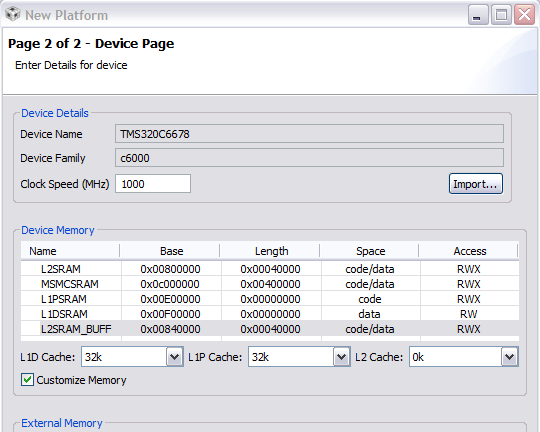Dear all,
I am using Hyperlink interface example that trasfer data from L2SRAM in local device to L2SRAM in remote device. The data segment is placed in L2SRAM in the
following linker file
http://www.mediafire.com/?leehect1refnwel
how to specify exactly the location where the data to be sent well be allocated to be sent through the hyperlink that's how to put the data to be sent in a specific location in the L2SRAM to be read by the hyperlink examble and sent through it?
looking forward for your comprehensive answer.
thank you in advance


